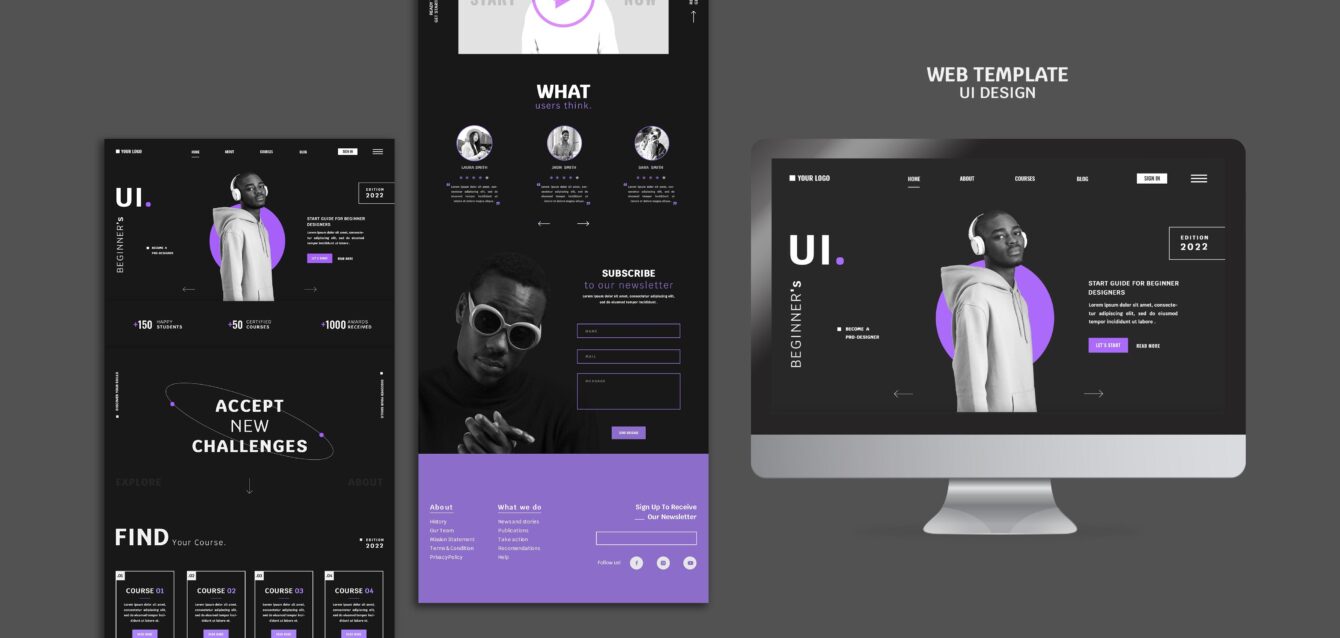In the digital age, your website’s design is more than just an aesthetic choice—it’s a critical factor in user engagement, retention, and conversions. The combination of User Experience (UX) and User Interface (UI) design is a powerful force that determines how users interact with your website. A well-crafted UX/UI design not only creates an intuitive interface but also delivers a seamless, enjoyable experience for your users.
What is UX/UI Design?
UX design focuses on the overall experience of a user when they interact with a website or application, ensuring that the interface is intuitive, efficient, and satisfying. UI design, on the other hand, focuses on the visual aspects of the website, such as colors, typography, and layout. Together, these elements combine to create a user-friendly, aesthetically pleasing, and functional website.
Why UX/UI Design is Critical for Success
- Boosts User Satisfaction
A seamless and enjoyable user experience is the cornerstone of any successful website. When users can easily navigate your website and find what they’re looking for, they’re more likely to stay longer, return, and complete conversions. UX/UI design plays a direct role in making that happen. - Increases Conversion Rates
Poor design choices or a confusing interface can lead to frustration and abandonment. On the flip side, a user-centered design that focuses on providing value and solving problems will increase the likelihood of conversions, whether it’s filling out a form, making a purchase, or subscribing to a newsletter. - Improves Accessibility
A website’s design should be accessible to all users, including those with disabilities. By considering accessibility in your UX/UI design, such as providing alt text for images, ensuring color contrast for readability, and creating navigable structures, you can ensure that your website serves a wider audience. - Establishes Brand Identity
Your website is often the first point of contact between your brand and potential customers. A consistent and visually appealing design builds trust and reinforces your brand identity. The right choice of colors, fonts, and layout elements conveys your brand’s personality and values, establishing an emotional connection with users. - Boosts SEO Performance
Google and other search engines take into account factors like site speed, mobile responsiveness, and overall user experience when ranking websites. A well-designed UX/UI that provides a smooth, fast, and enjoyable user experience can indirectly improve your website’s SEO performance, increasing organic traffic.
Key Elements of Effective UX/UI Design
- Simplicity and Clarity
Users should be able to understand the purpose of a website at a glance. A cluttered interface with too many options or distracting elements will confuse visitors. By prioritizing simplicity, clear navigation, and clean visuals, you ensure that users can easily find what they need without feeling overwhelmed. - Responsive Design
With the increasing use of mobile devices, responsive design has become a must. Your website should function seamlessly across all devices, whether it’s a desktop, tablet, or smartphone. Ensuring that your site adapts to different screen sizes and orientations creates a positive experience for users regardless of how they access it. - Intuitive Navigation
A website’s navigation system should be easy to use and understand. Users should be able to locate essential pages or information with minimal effort. Logical menu structures, clear calls to action (CTAs), and well-organized content are key to improving navigation and overall usability. - Fast Loading Times
Website speed is a crucial component of UX/UI design. Slow loading times can frustrate users and result in a high bounce rate. Optimizing images, using proper coding techniques, and utilizing fast hosting services can significantly improve load times, resulting in a smoother experience for users. - Consistent Visual Elements
Consistency is key in UX/UI design. Users should experience a cohesive visual language across all pages of your website. Consistent colors, typography, and button styles create a sense of familiarity and help users navigate the site more intuitively. - User Feedback and Testing
User feedback and testing are invaluable tools in refining your UX/UI design. Conducting usability tests, surveys, or heat map analysis can help identify pain points and areas for improvement. Listening to your users and incorporating their feedback ensures that your website design evolves in line with their needs.
UX/UI Design Best Practices
- User-Centered Design
The most important principle of UX/UI design is understanding the needs and preferences of your users. A user-centered approach ensures that all design decisions are made with the user’s experience in mind. - Prioritize Accessibility
Design your website to be inclusive, considering users with different abilities. Accessible web design is not just a best practice but also a legal requirement in many countries. - Use Visual Hierarchy
Visual hierarchy helps users prioritize information and navigate the site efficiently. Use size, color, and contrast to draw attention to key elements like headings, CTAs, and important content. - Implement Clear Calls to Action
Make it easy for users to take the next step by incorporating clear and compelling CTAs throughout the website. Whether it’s “Shop Now,” “Contact Us,” or “Learn More,” these buttons should be strategically placed and easy to find. - Continuously Iterate
UX/UI design is not a one-time effort. Continuous improvements based on data and user feedback will help you stay ahead of the curve and provide the best possible experience for your users.
Final Thoughts
A well-executed UX/UI design can elevate your website from functional to exceptional. By focusing on the user’s needs, ensuring intuitive navigation, and creating visually appealing layouts, you provide an experience that encourages engagement, builds trust, and drives conversions. Investing in great UX/UI design is an investment in the long-term success of your website and your business.
Want to take your website’s user experience to the next level?
Let’s work together on creating an intuitive, beautiful design that’s tailored to your business goals!







